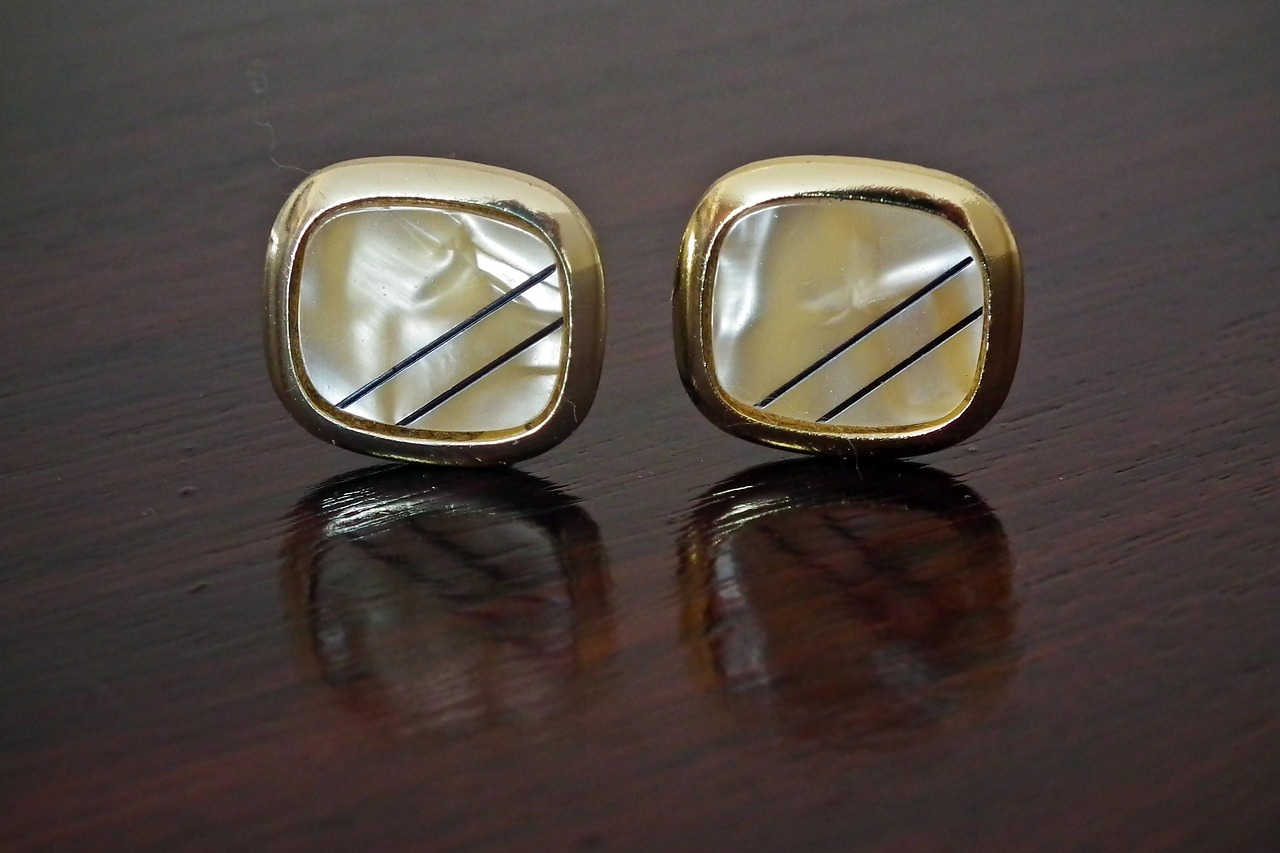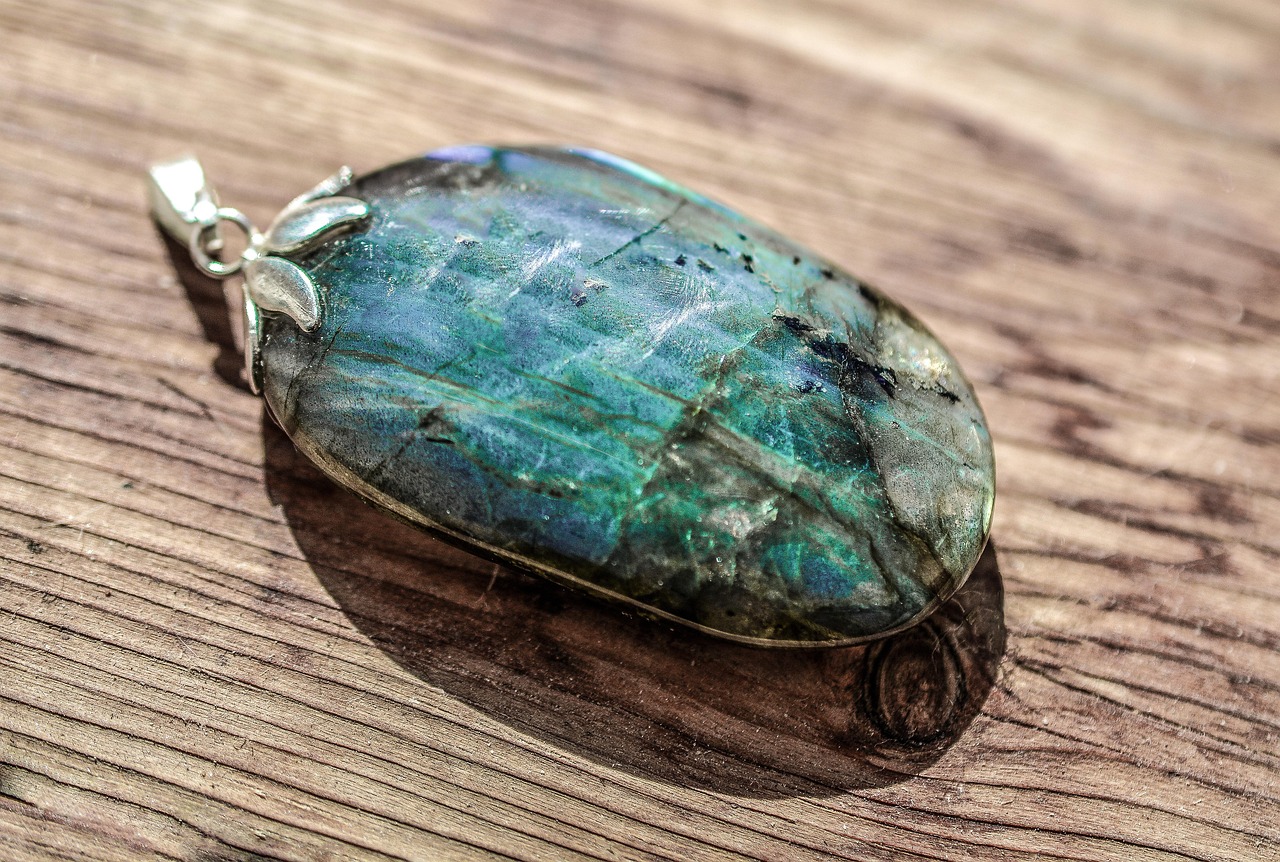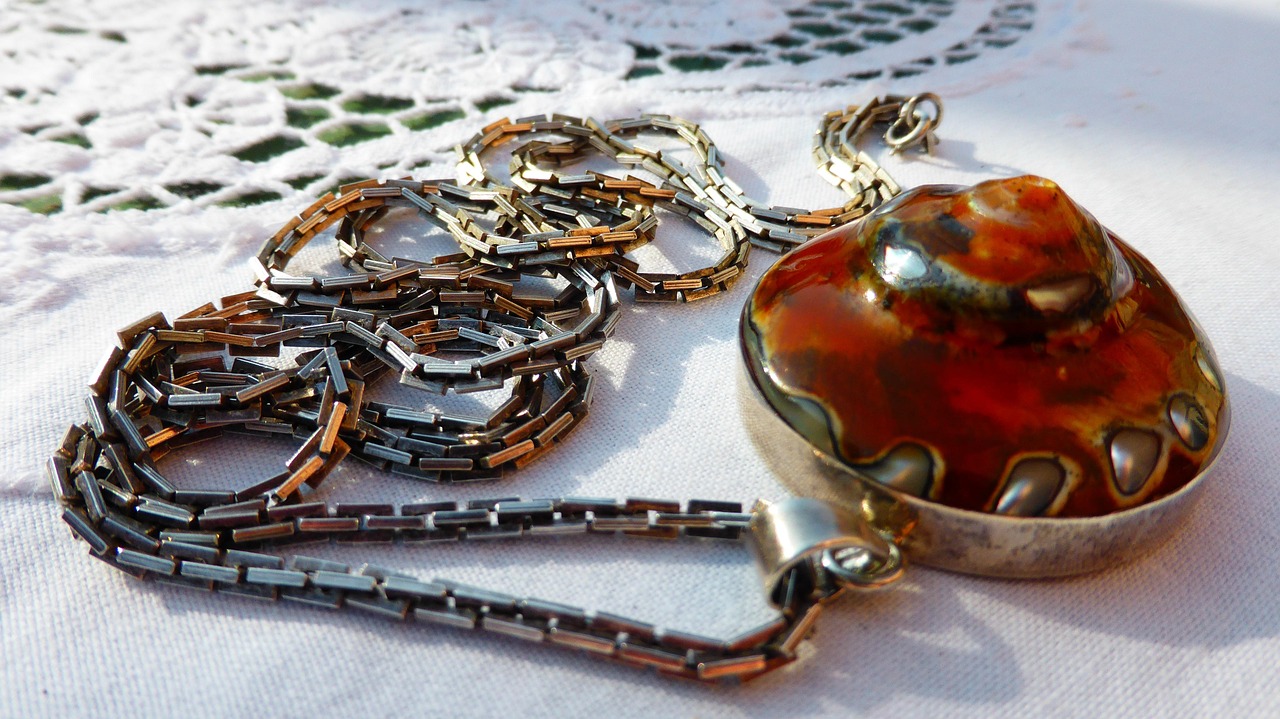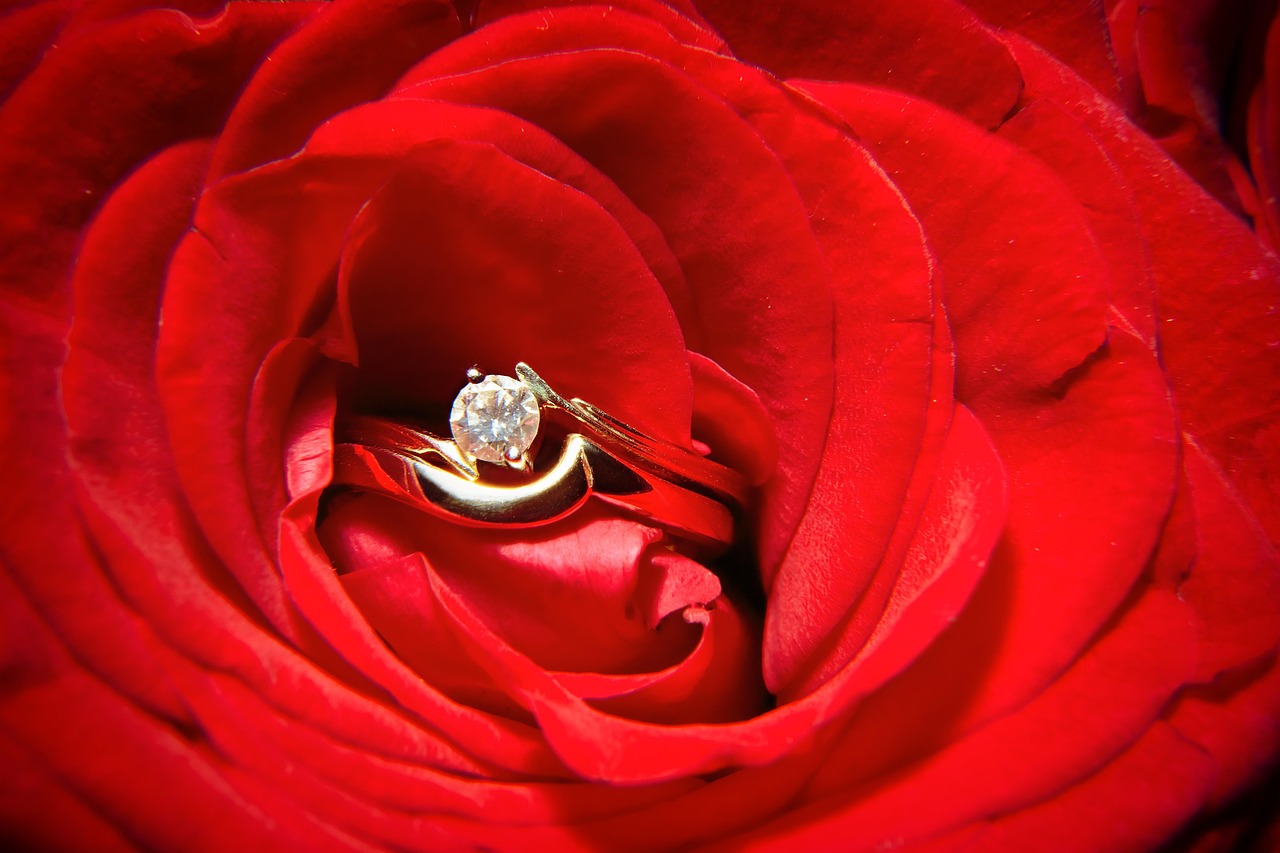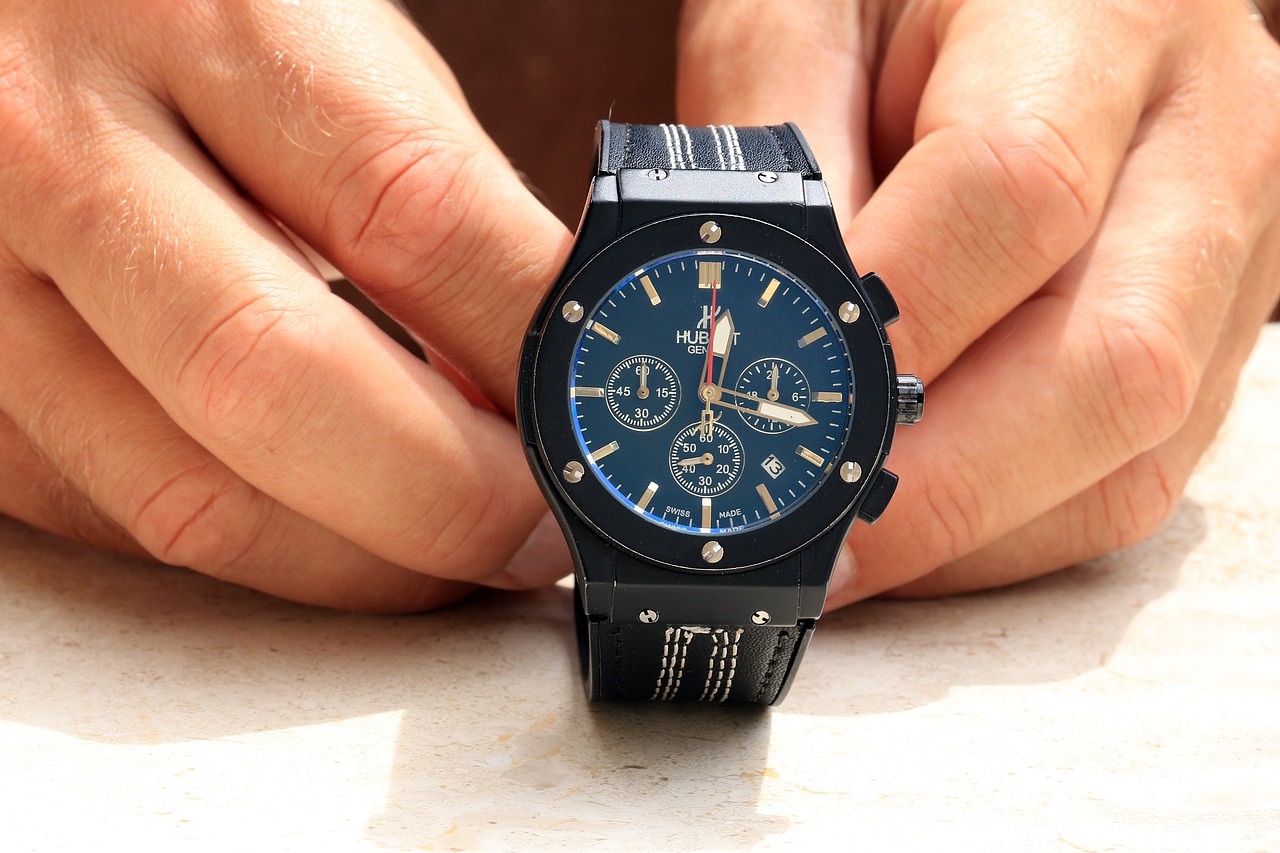This article explores the differences between personalized and mass-produced jewelry, examining their unique qualities, benefits, and potential drawbacks to help consumers make informed choices.
What Is Personalized Jewelry?
Personalized jewelry refers to items that are custom-made or engraved to reflect individual preferences, such as names, initials, or special dates. The unique appeal of personalized jewelry lies in its ability to tell a story or commemorate a significant moment in one’s life. Whether it’s a necklace with a loved one’s name or a bracelet engraved with a special date, personalized pieces often carry a sentimental value that mass-produced items cannot replicate.
What Is Mass-Produced Jewelry?
Mass-produced jewelry is manufactured in large quantities using standardized designs and materials. This type of jewelry is widely accessible and often more affordable than personalized options. However, the trade-off for this affordability is a lack of uniqueness and emotional connection. Mass-produced pieces may lack the detail and craftsmanship that can be found in custom-made items.
Why Choose Personalized Jewelry?
Choosing personalized jewelry often stems from a desire for uniqueness and an emotional connection. Such pieces are perfect for gifts, as they can be tailored to the recipient’s tastes and preferences. The creativity involved in designing custom jewelry allows for a deeper expression of love, friendship, or personal milestones.
What Are the Advantages of Mass-Produced Jewelry?
Mass-produced jewelry offers various advantages, including affordability and availability. With a vast range of styles and designs, consumers can easily find something that fits their taste without breaking the bank. Additionally, mass-produced jewelry is often readily available in stores, making it a convenient option for last-minute gifts or fashion accessories.
How Does Cost Differ Between Personalized and Mass-Produced Jewelry?
Cost is a significant factor when choosing jewelry. Personalized jewelry typically comes at a premium due to the custom work involved, while mass-produced options are generally more budget-friendly. Consumers should consider their budget and the value they place on uniqueness when making a decision.
What Are the Quality Differences?
Quality can vary widely between personalized and mass-produced jewelry. Personalized pieces often use higher-quality materials and showcase superior craftsmanship. In contrast, mass-produced jewelry may prioritize cost-efficiency over quality, leading to variations in durability and aesthetics. Buyers should assess the materials used and the reputation of the maker to ensure they are investing in a quality piece.
How to Choose Between Personalized and Mass-Produced Jewelry?
Making the right choice between personalized and mass-produced jewelry can be challenging. Consider the occasion, your budget, and the recipient’s preferences. If you are looking for a meaningful gift, personalized jewelry may be the better option. However, if you need something stylish and affordable for everyday wear, mass-produced jewelry can be a practical choice.
What Are the Trends in Personalized Jewelry?
The jewelry industry is ever-evolving. Current trends in personalized jewelry include the use of birthstones, initials, and custom engravings. Consumers are increasingly drawn to pieces that reflect their personality and life experiences, making personalized jewelry a popular choice.
What Are the Environmental Impacts?
Understanding the environmental implications of jewelry production is crucial. Personalized jewelry may have a lower environmental impact if crafted from sustainable materials, while mass-produced jewelry can contribute to higher waste levels due to overproduction. Consumers should consider the sustainability practices of brands when making their purchases.
How to Care for Your Jewelry?
Proper care can extend the life of your jewelry. For personalized pieces, it’s essential to follow specific care instructions, especially for delicate materials. Mass-produced jewelry may require less delicate handling, but it’s still important to keep it clean and store it properly to maintain its appearance.

What Is Personalized Jewelry?
Personalized jewelry is more than just an accessory; it is a reflection of one’s identity and personal story. These unique pieces are often custom-made or engraved to showcase individual preferences, such as names, initials, or special dates. The appeal of personalized jewelry lies in its ability to convey deep emotional significance, making it a popular choice for gifts and personal keepsakes.
Why Is Personalized Jewelry So Special?
- Emotional Connection: Personalized jewelry often holds sentimental value. Whether it’s a necklace with a loved one’s name or a bracelet engraved with a significant date, these items create lasting memories.
- Uniqueness: Unlike mass-produced jewelry, personalized pieces are one-of-a-kind. They are designed to reflect the wearer’s personality and style, ensuring that no two pieces are exactly alike.
- Creativity: Custom jewelry allows for creativity and expression. Consumers can choose designs, materials, and engravings that resonate with them, making the piece truly theirs.
How Is Personalized Jewelry Made?
The process of creating personalized jewelry can vary significantly depending on the materials and techniques used. Common methods include:
- Engraving: This involves etching names, dates, or messages onto the surface of the jewelry, often using laser technology for precision.
- Custom Design: Many jewelers offer the option to design a piece from scratch, allowing customers to collaborate on every aspect, from the type of metal to the gemstones.
- Handcrafted Techniques: Some artisans create personalized jewelry by hand, infusing each piece with unique craftsmanship that reflects the artist’s skill and creativity.
Who Typically Chooses Personalized Jewelry?
Personalized jewelry appeals to a wide range of individuals. It is often chosen for:
- Gifts: Personalized pieces make thoughtful gifts for occasions such as birthdays, anniversaries, or graduations, allowing the giver to express their feelings in a unique way.
- Self-Expression: Individuals may choose personalized jewelry as a means of self-expression, showcasing their identity, beliefs, or milestones.
- Memorialization: Many people opt for personalized jewelry to commemorate loved ones or significant life events, creating tangible reminders of cherished memories.
What Are the Trends in Personalized Jewelry?
The world of personalized jewelry is constantly evolving, with trends that reflect consumer preferences. Popular trends include:
- Minimalist Designs: Simple, elegant pieces that highlight the personalization without overwhelming the design are gaining popularity.
- Birthstone Incorporation: Many individuals are opting to include birthstones in their personalized pieces, adding both color and meaning.
- Layering: Stacking personalized rings or necklaces has become a fashionable way to showcase multiple meaningful pieces at once.
In conclusion, personalized jewelry stands out as a significant choice for those looking to express individuality and create lasting memories. Its emotional resonance, unique appeal, and ability to adapt to current trends make it a cherished option for many.

What Is Mass-Produced Jewelry?
Mass-produced jewelry refers to items that are created in large quantities, utilizing standardized designs and materials. This approach to jewelry making has become increasingly popular due to its accessibility and affordability. In this section, we will explore the various aspects of mass-produced jewelry, including its benefits, limitations, and the trade-offs consumers should consider when opting for these pieces.
One of the most significant advantages of mass-produced jewelry is its affordability. By manufacturing jewelry in bulk, companies can reduce production costs, allowing them to offer products at lower prices. This makes it possible for a broader audience to access a variety of styles and designs without breaking the bank. Whether you are looking for a simple pair of earrings or a statement necklace, mass-produced options can often be found at a fraction of the cost of personalized pieces.
Another key factor is availability. Mass-produced jewelry is widely available in retail stores, online marketplaces, and even at major department stores. This extensive distribution means that consumers can easily find pieces that suit their tastes and preferences. With countless designs to choose from, shoppers can enjoy the convenience of browsing a vast selection without the need to consult a jeweler or wait for custom pieces to be made.
- Standardized Designs: Mass-produced jewelry often features designs that are trendy and appealing to the average consumer. However, this can also mean that the pieces lack uniqueness.
- Material Quality: While some mass-produced jewelry is made from quality materials, others may use lower-grade components to keep costs down. Consumers should be aware of the materials used and their implications for durability.
- Environmental Impact: Mass production can lead to significant environmental concerns, including waste and resource depletion. Understanding the production practices of brands can help consumers make informed choices.
Despite its many advantages, there are trade-offs to consider when choosing mass-produced jewelry. The most notable drawback is the lack of personalization. Unlike custom-made pieces, mass-produced items often lack the emotional connection that comes with personalized jewelry. For many consumers, wearing jewelry that reflects their individuality or carries sentimental value is essential. This is where the appeal of personalized jewelry shines through.
In terms of quality, mass-produced jewelry can vary significantly. While some manufacturers prioritize craftsmanship and use high-quality materials, others may cut corners to reduce costs. It is crucial for consumers to research brands and read reviews to ensure they are making a wise investment.
Ultimately, choosing mass-produced jewelry comes down to individual preferences and priorities. For those seeking affordable and trendy options, mass-produced pieces can be a fantastic choice. However, for consumers looking for something unique or meaningful, personalized jewelry may be the better route.
In conclusion, mass-produced jewelry offers an array of advantages, including accessibility and affordability. However, potential buyers should weigh the benefits against the limitations, such as lack of uniqueness and varying quality. By understanding these factors, consumers can make informed decisions that best suit their needs.

Why Choose Personalized Jewelry?
When it comes to jewelry, the choice between personalized and mass-produced pieces can be a significant one. Personalized jewelry offers a unique opportunity to express individuality and forge emotional connections, making it a popular choice for many. This article delves into the reasons why choosing personalized jewelry can be a meaningful experience.
Personalized jewelry is defined by its customization. These pieces can be tailored to reflect your personality, commemorate special moments, or honor loved ones. From engraved names to birthstones representing family members, the possibilities are endless. This level of customization allows individuals to create something that is truly one-of-a-kind, setting it apart from mass-produced options.
One of the most compelling reasons to choose personalized jewelry is its emotional significance. Each piece tells a story, whether it’s a bracelet engraved with a meaningful date or a necklace featuring the initials of a cherished family member. These items often become treasured keepsakes, passed down through generations, symbolizing love and connection.
Personalized jewelry also serves as a canvas for creative expression. Consumers can collaborate with artisans to design pieces that reflect their unique style and preferences. This process fosters a sense of ownership and pride in the jewelry, as it is not merely an accessory but a representation of personal identity.
When it comes to gifting, personalized jewelry stands out as a thoughtful choice. A custom piece shows that you have invested time and effort into selecting something special. Whether it’s a necklace for a birthday or a bracelet for an anniversary, the recipient is likely to appreciate the thoughtfulness behind the gift, making it more memorable.
Another benefit of personalized jewelry is the potential for superior quality and craftsmanship. Many artisans take pride in their work, using high-quality materials and techniques that ensure durability and aesthetic appeal. This focus on craftsmanship often results in pieces that not only look stunning but also stand the test of time.
Choosing personalized jewelry often involves working directly with artisans or jewelers, fostering a connection that enhances the overall experience. This relationship allows for open communication, enabling customers to express their ideas and preferences clearly. Such interactions can lead to a deeper appreciation for the artistry involved in jewelry making.
The world of personalized jewelry is continuously evolving, with new trends emerging regularly. Current styles often incorporate mixed metals, minimalist designs, and the use of sustainable materials. Staying updated on these trends can help consumers make informed choices that align with their values and aesthetics.
In summary, choosing personalized jewelry offers a myriad of benefits, from emotional connections to creative expression. The uniqueness, quality, and thoughtfulness associated with custom pieces make them a compelling choice for anyone looking to invest in meaningful jewelry. Whether for oneself or as a gift, personalized jewelry is not just an accessory; it is a reflection of who we are and the bonds we cherish.

What Are the Advantages of Mass-Produced Jewelry?
Mass-produced jewelry has gained immense popularity in recent years, primarily due to its affordability and availability. These two factors play a crucial role in making it a favored choice among consumers from various backgrounds. This section explores the advantages of mass-produced jewelry in detail, elucidating why it stands out in a crowded market.
- Cost-Effectiveness: One of the most significant advantages of mass-produced jewelry is its affordable pricing. With standardized designs and materials, manufacturers can produce items at a lower cost, passing the savings on to consumers. This allows individuals to purchase stylish pieces without breaking the bank.
- Wide Availability: Mass-produced jewelry is widely accessible in numerous retail outlets, both online and offline. Shoppers can find a vast array of options, from earrings to necklaces, in various styles and materials. This extensive selection caters to diverse tastes and preferences, making it easy for anyone to find something they love.
- Trendy Designs: The jewelry market is constantly evolving, with trends changing frequently. Mass-produced jewelry often reflects current fashion trends, allowing consumers to stay in style without investing in high-priced designer items. This trendiness attracts fashion-conscious individuals looking for affordable yet stylish options.
- Convenience: The ease of purchasing mass-produced jewelry cannot be overstated. Shoppers can quickly browse through collections in stores or online, making it simple to find the perfect accessory for any occasion. This convenience is particularly appealing for those who may not have the time or desire to seek out custom pieces.
- Gift Options: Mass-produced jewelry makes excellent gifts due to its affordability and variety. Whether for birthdays, anniversaries, or holidays, consumers can find suitable options that fit different budgets and preferences. This accessibility makes mass-produced items a go-to choice for gifting.
While mass-produced jewelry offers numerous advantages, it is essential to consider the potential drawbacks as well. For instance, the mass production process can lead to lower quality in some cases, as the focus is often on quantity over craftsmanship. Additionally, consumers seeking uniqueness may find mass-produced items less appealing compared to personalized options.
In summary, the advantages of mass-produced jewelry—such as affordability, availability, and convenience—make it a popular choice among consumers. As the jewelry market continues to grow, understanding these benefits can help shoppers make informed decisions that align with their needs and preferences.

How Does Cost Differ Between Personalized and Mass-Produced Jewelry?
When it comes to purchasing jewelry, one of the most crucial factors to consider is cost. Understanding the differences in pricing between personalized and mass-produced jewelry can significantly influence your buying decision. This section will provide a comprehensive breakdown of the pricing structures associated with each type, enabling consumers to budget effectively.
Personalized jewelry is often seen as a premium option. The cost typically reflects the customization involved, which can include engraving names, initials, or special dates. Factors that contribute to the higher price point include:
- Materials Used: Personalized pieces are often crafted from high-quality materials such as gold, silver, or precious stones, which can drive up the cost.
- Craftsmanship: The intricate work required to create a unique piece adds to labor costs, as skilled artisans are often involved in the process.
- Design Complexity: Custom designs that require more time and effort to create are generally more expensive.
On average, personalized jewelry can range from $50 for simpler pieces to several thousand dollars for intricate designs. This investment often carries emotional significance, making it worthwhile for many consumers.
In contrast, mass-produced jewelry is designed and manufactured in large quantities, which significantly reduces costs. The pricing structure for these pieces is influenced by several factors:
- Economies of Scale: Mass production allows for lower per-unit costs as manufacturers can spread fixed costs over a larger number of items.
- Standardized Materials: Mass-produced items often use lower-cost materials, which can make them more affordable.
- Limited Customization: The lack of personalization means lower labor costs, as these items are typically produced using automated processes.
Prices for mass-produced jewelry can start as low as $10 and typically range up to $300, depending on the brand and materials used. This affordability makes mass-produced jewelry a popular choice for consumers seeking stylish options on a budget.
While the initial cost is a significant factor, it is essential to consider the value each type of jewelry offers. Personalized jewelry often carries a sentimental value that mass-produced items lack. Many consumers are willing to pay a premium for pieces that reflect their identity or commemorate special occasions.
On the other hand, mass-produced jewelry provides accessibility and variety, allowing consumers to experiment with different styles without a hefty financial commitment. For those who prioritize trendiness over sentiment, mass-produced options can be an attractive choice.
When deciding between personalized and mass-produced jewelry, it is crucial to establish a budget that reflects your financial situation and personal preferences. Consider the following tips:
- Assess Your Priorities: Determine whether the emotional significance of personalized jewelry outweighs the cost for you.
- Research Options: Explore various retailers to compare prices and find the best deals, whether you opt for personalized or mass-produced items.
- Plan for Future Purchases: If you choose personalized pieces, consider saving over time to invest in a quality item that will last.
Ultimately, understanding the cost differences between personalized and mass-produced jewelry can empower consumers to make informed decisions that align with their values and budgets.

What Are the Quality Differences?
When it comes to jewelry, the quality of the piece can significantly influence a buyer’s decision. Understanding the distinctions between personalized and mass-produced jewelry is essential for making an informed choice. In this section, we will explore the differences in quality, examining the materials and craftsmanship involved in each type.
Quality in jewelry is determined by several factors, including the materials used, the craftsmanship involved, and the overall design. High-quality jewelry often features durable materials, such as precious metals and gemstones, which not only enhance the aesthetic appeal but also ensure longevity.
Personalized jewelry often utilizes high-grade materials to create unique pieces that reflect individual tastes. Common materials include:
- Gold: Available in various karats, gold offers both beauty and durability.
- Silver: Sterling silver is a popular choice for personalized items, known for its luster and affordability.
- Gemstones: Custom pieces may feature a range of gemstones, from diamonds to birthstones, enhancing their personal significance.
The craftsmanship involved in creating personalized jewelry is often meticulous, with artisans paying close attention to detail. This process can include hand engraving, custom settings, and unique designs that cater to the buyer’s preferences.
In contrast, mass-produced jewelry is typically made from lower-cost materials to keep prices down. Common materials include:
- Base Metals: Many mass-produced items use metals like brass or copper, which can tarnish over time.
- Plated Finishes: Gold or silver plating is often used to give the appearance of precious metals without the associated cost.
- Synthetic Stones: Instead of natural gemstones, many mass-produced pieces incorporate synthetic alternatives, which can lack the unique qualities of their natural counterparts.
While mass-produced jewelry can be visually appealing, the craftsmanship is generally less intricate than that of personalized pieces, often relying on automated processes that prioritize speed over quality.
One of the most significant quality differences lies in the durability and longevity of the jewelry. Personalized pieces, crafted from higher-quality materials and with careful attention to detail, tend to last longer and withstand wear and tear. In contrast, mass-produced jewelry may show signs of wear more quickly due to the use of inferior materials and less rigorous quality control.
Beyond physical attributes, personalized jewelry often carries a sentimental value that mass-produced items lack. The ability to engrave names, dates, or special messages adds an emotional layer to personalized pieces, making them cherished keepsakes. Buyers often find that the emotional connection to these items enhances their perceived quality.
When shopping for jewelry, understanding these quality differences can guide your decision. Personalized jewelry typically comes with a higher price tag due to the quality of materials and craftsmanship involved. However, the investment often pays off in terms of durability and emotional significance. On the other hand, mass-produced jewelry offers affordability and accessibility but may require more frequent replacement due to lower quality.
In conclusion, the quality differences between personalized and mass-produced jewelry are significant and should be carefully considered when making a purchase. By understanding the materials, craftsmanship, and emotional value associated with each type, buyers can make informed decisions that align with their preferences and budget.
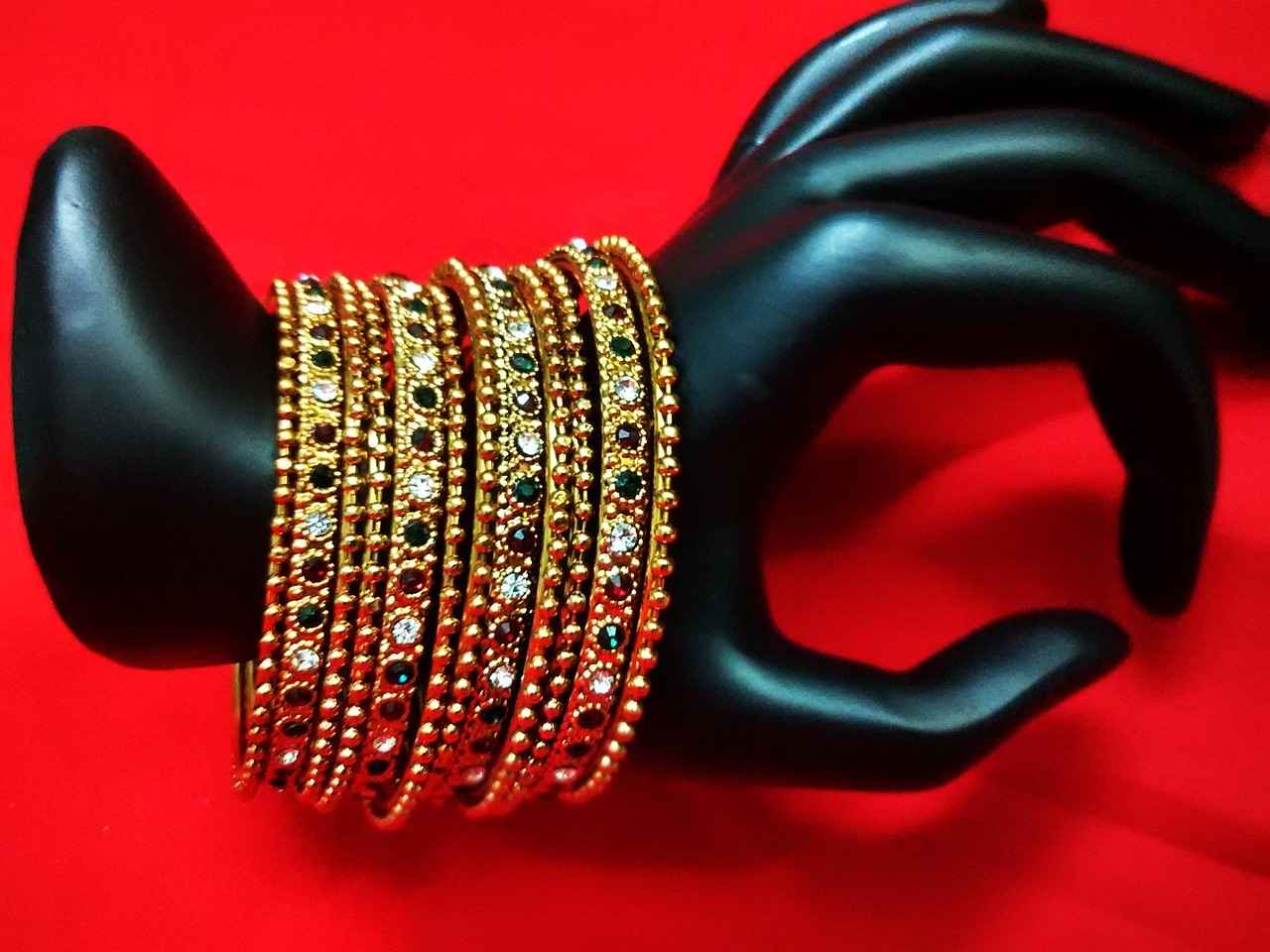
How to Choose Between Personalized and Mass-Produced Jewelry?
Choosing between personalized and mass-produced jewelry can be a daunting task, especially with the myriad of options available. Each type has its unique advantages and considerations that can influence your decision. This guide aims to provide you with practical tips and insights to help you navigate this choice effectively.
Before making a decision, it’s essential to assess your needs and what you hope to achieve with your jewelry purchase. Ask yourself the following questions:
- Are you looking for a piece that holds sentimental value?
- Is this jewelry for a special occasion or everyday wear?
- What is your budget?
Personalized jewelry allows for a unique expression of individuality. Consider these factors when weighing your options:
- Customization: Can you incorporate specific designs, names, or dates?
- Craftsmanship: Is the piece handmade or mass-produced?
- Emotional Connection: Does it resonate with your personal story or values?
Personalized items often come with a higher price tag due to the craftsmanship involved, but the emotional value can outweigh the cost.
Mass-produced jewelry is typically more affordable and widely available. Here are some considerations:
- Cost-Effectiveness: Does staying within budget outweigh the need for uniqueness?
- Variety: Are there enough styles to choose from that align with your taste?
- Availability: Can you find pieces easily in stores or online?
Mass-produced items can be perfect for those seeking trendy pieces without breaking the bank, but they may lack the personal touch of custom jewelry.
When choosing between these two options, quality and durability are crucial. Personalized jewelry may use higher-quality materials, while mass-produced items can sometimes compromise on this for cost-effectiveness. Always check:
- The materials used (e.g., gold, silver, gemstones)
- The reputation of the manufacturer or artisan
- Customer reviews and ratings
Ultimately, the decision comes down to personal preference and the significance of the piece. Here are some final tips:
- Reflect on Your Style: Which option aligns more with your personal style?
- Consider the Occasion: Is this for a gift, a milestone, or a personal treat?
- Think Long-Term: Will this piece hold its value and significance over time?
By weighing these factors carefully, you can make a more informed choice that meets your needs and preferences.

What Are the Trends in Personalized Jewelry?
The world of jewelry is constantly changing, with new trends emerging that reflect the evolving tastes and preferences of consumers. Personalized jewelry has become increasingly popular, allowing individuals to express their uniqueness and personal stories through their accessories. In this section, we will explore the latest trends in personalized jewelry, focusing on styles and materials that resonate with today’s consumers.
- Initials and Monograms: One of the most enduring trends in personalized jewelry is the use of initials and monograms. Consumers are drawn to items that feature their own initials or those of loved ones, making the pieces feel intimate and special.
- Birthstones: Incorporating birthstones into personalized jewelry is another growing trend. These gemstones add a layer of meaning and connection, often representing family members or significant life events.
- Custom Engravings: Many consumers are opting for custom engravings on rings, bracelets, and necklaces. This trend allows for messages, quotes, or dates that hold personal significance, creating a deep emotional connection to the piece.
- Layering and Stacking: The trend of layering personalized pieces is gaining traction. Consumers enjoy mixing and matching different styles, such as necklaces with initials, birthstones, and charms, to create a unique look that reflects their personality.
- Sustainable Materials: With growing awareness of environmental issues, many consumers are seeking personalized jewelry made from sustainable materials. Recycled metals and ethically sourced gemstones are becoming increasingly popular, aligning with the values of eco-conscious shoppers.
The materials used in personalized jewelry play a significant role in its appeal. Some of the most popular materials include:
| Material | Characteristics |
|---|---|
| Gold | Timeless and luxurious, gold can be customized in various colors such as yellow, white, and rose. |
| Silver | Affordable and versatile, silver is often used for engravings and intricate designs. |
| Stainless Steel | Durable and resistant to tarnishing, stainless steel is a popular choice for modern personalized jewelry. |
| Wood | Eco-friendly and unique, wooden pieces offer a natural aesthetic that appeals to many consumers. |
Social media platforms, particularly Instagram and Pinterest, have a significant impact on the trends in personalized jewelry. Influencers and celebrities often showcase their customized pieces, inspiring followers to seek similar styles. Additionally, the visual nature of these platforms allows consumers to discover new designs and ideas, further fueling the demand for personalized items.
As the jewelry industry continues to evolve, personalized jewelry remains a prominent trend. The combination of unique designs, meaningful materials, and the influence of social media ensures that consumers will continue to seek out pieces that resonate with their individual stories and values.

What Are the Environmental Impacts?
Understanding the environmental implications of jewelry production is crucial in today’s eco-conscious world. As consumers become more aware of their purchasing decisions, the sustainability practices of jewelry brands are under scrutiny. In this section, we will compare the environmental impacts of personalized and mass-produced jewelry, shedding light on their respective practices and encouraging informed choices.
Personalized jewelry is often crafted by artisans who prioritize sustainability and ethical sourcing. Many of these creators use recycled materials, minimizing the need for new raw materials and reducing waste. Additionally, small-scale production typically results in a lower carbon footprint compared to large-scale manufacturing.
- Recycled Materials: Many artisans use recycled metals and ethically sourced stones, which significantly reduce the environmental impact.
- Local Sourcing: Personalized jewelry often involves local suppliers, which decreases transportation emissions.
- Artisanal Techniques: Traditional crafting methods can be more environmentally friendly than industrial processes.
In contrast, mass-produced jewelry frequently relies on bulk manufacturing, which can lead to significant environmental degradation. The extraction of raw materials, such as gold and diamonds, often involves destructive mining practices that can devastate local ecosystems.
- Mining Practices: Large-scale mining operations can result in habitat destruction, water pollution, and soil erosion.
- Carbon Footprint: The transportation of mass-produced items globally contributes to increased greenhouse gas emissions.
- Waste Generation: The production of standardized jewelry often leads to excess waste, as unsold items are discarded.
When comparing sustainability practices, it is evident that personalized jewelry tends to have a more favorable environmental profile. Artisans often emphasize transparency in their sourcing and production methods, allowing consumers to make choices that align with their values. On the other hand, mass-produced jewelry brands may prioritize profit over sustainability, leading to practices that harm the environment.
As consumers, it is essential to consider the environmental implications of our jewelry choices. Here are some practical tips:
- Research Brands: Look for jewelry brands that prioritize sustainable practices and ethical sourcing.
- Support Local Artisans: Purchasing from local artisans not only supports the economy but often reduces environmental impact.
- Choose Recycled Options: Opt for jewelry made from recycled materials to minimize the demand for new resources.
Ultimately, understanding the environmental impacts of jewelry production empowers consumers to make choices that reflect their values. By opting for personalized jewelry, individuals can support sustainable practices while enjoying unique pieces that carry personal significance.

How to Care for Your Jewelry?
Jewelry is more than just an accessory; it often holds sentimental value and represents significant moments in our lives. Whether you own personalized pieces that reflect your individuality or mass-produced jewelry that complements your style, proper care is essential. This section provides practical advice on how to maintain both types of jewelry, ensuring they remain beautiful and last for years to come.
Taking care of your jewelry is crucial for several reasons. First, it helps to maintain the luster and shine of the pieces, preventing tarnishing and wear. Second, regular maintenance can identify potential issues before they become serious problems, allowing for timely repairs. Lastly, well-cared-for jewelry often retains its value better than neglected pieces.
- Use a Soft Cloth: Gently wipe personalized jewelry with a soft, lint-free cloth after each use to remove oils and dirt.
- Gentle Cleaning Solutions: For deeper cleaning, use a mild soap solution and a soft brush. Rinse thoroughly and dry completely.
- Avoid Harsh Chemicals: Stay away from bleach and other harsh chemicals that can damage personalized engravings or materials.
- Regular Inspections: Check for loose stones or damaged clasps regularly to prevent loss.
- Store Properly: Keep mass-produced pieces in a soft pouch or a separate compartment to avoid scratching and tangling.
- Limit Exposure: Avoid wearing mass-produced jewelry while swimming, exercising, or during household chores to reduce wear and tear.
Proper storage can significantly extend the life of your jewelry. Here are some tips:
- Use a Jewelry Box: Invest in a quality jewelry box with compartments to keep pieces organized and protected.
- Keep Away from Sunlight: Store your jewelry in a cool, dark place to prevent fading and damage from UV rays.
- Separate Pieces: Keep different types of jewelry separated to avoid scratching and tangling.
While regular at-home care is essential, consider having your jewelry professionally cleaned at least once a year. This service can include:
- Thorough Cleaning: Professionals use specialized tools and solutions to clean intricate designs and settings.
- Inspection: Jewelers can check for any loose stones or damage that may require repair.
- Polishing: Professional polishing can restore the original shine of your jewelry.
If you notice any damage, such as a broken clasp or a loose stone, it’s important to act quickly:
- Stop Wearing It: Avoid further damage by not wearing the piece until it has been repaired.
- Seek Professional Help: Take the piece to a reputable jeweler for repair. They can assess the damage and provide options for restoration.
In conclusion, proper care and maintenance of your jewelry, whether personalized or mass-produced, can significantly enhance its longevity and beauty. By following these practical tips, you can ensure that your treasured pieces remain in excellent condition for many years to come.
Frequently Asked Questions
- What is the main difference between personalized and mass-produced jewelry?
Personalized jewelry is custom-made to reflect individual tastes, often featuring names or special dates, while mass-produced jewelry is made in bulk with standardized designs, making it more accessible but less unique.
- Why should I choose personalized jewelry?
If you’re looking for something that tells your story or holds sentimental value, personalized jewelry is the way to go. It’s like wearing a piece of your life, making it special and unique to you.
- What are the cost differences between the two types?
Generally, personalized jewelry tends to be more expensive due to the custom work involved, while mass-produced pieces are often more budget-friendly, catering to a wider audience.
- How do I know which type of jewelry is right for me?
Consider what you value more—uniqueness or affordability. If you want a statement piece that reflects your personality, go for personalized. If you need something trendy and affordable, mass-produced might be your best bet.
- Are there any environmental impacts to consider?
Yes! Personalized jewelry often uses sustainable practices, while mass-produced jewelry can have a larger environmental footprint due to high-volume manufacturing. Always check the brand’s sustainability efforts!

